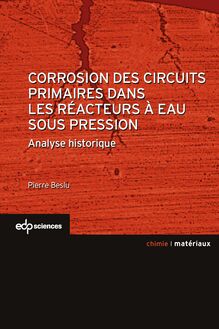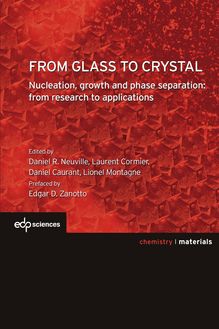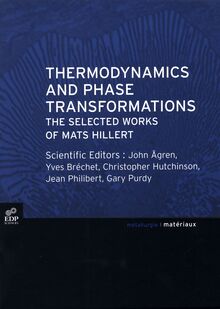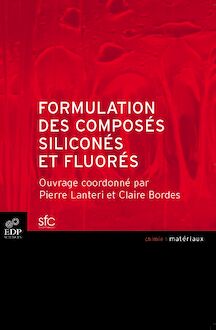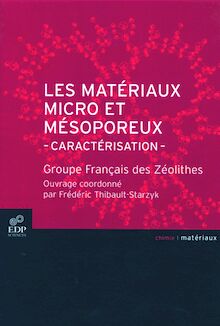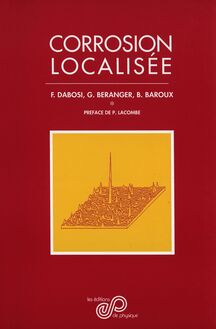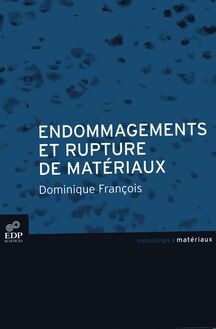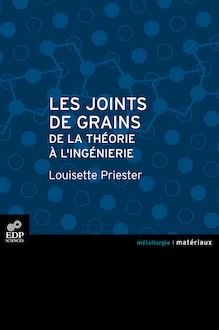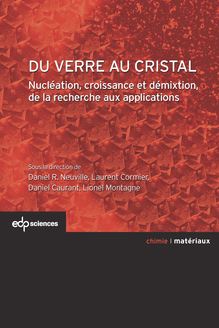-
 Univers
Univers
-
 Ebooks
Ebooks
-
 Livres audio
Livres audio
-
 Presse
Presse
-
 Podcasts
Podcasts
-
 BD
BD
-
 Documents
Documents
-
- Cours
- Révisions
- Ressources pédagogiques
- Sciences de l’éducation
- Manuels scolaires
- Langues
- Travaux de classe
- Annales de BEP
- Etudes supérieures
- Maternelle et primaire
- Fiches de lecture
- Orientation scolaire
- Méthodologie
- Corrigés de devoir
- Annales d’examens et concours
- Annales du bac
- Annales du brevet
- Rapports de stage
La lecture à portée de main
Découvre YouScribe en t'inscrivant gratuitement
Je m'inscrisInteractions Materials - Microorganisms , livre ebook
Découvre YouScribe en t'inscrivant gratuitement
Je m'inscrisEn savoir plus
En savoir plus

Description
This multidisciplinary book is the result of a collective work synthesizing presentations made by various specialists during the CNRS «BIODEMAT» school, which took place in October 2014 in La Rochelle (France). It is designed for readers of a range of scientific specialties (chemistry, biology, physics, etc.) and examines various industrial problems (e.g., water, sewerage and maintaining building materials).
Metallic, cementitious, polymeric and composite materials age depending on their service and operational environments. In such cases, the presence of microorganisms can lead to biodeterioration. However, microorganisms can also help protect structures, provided their immense possibilities are mastered and put to good use.
This book is divided into five themes related to biocolonization, material biodeterioration, and potential improvements to such materials resulting in better performance levels with respect to biodeterioration:
• physical chemistry of surfaces;
• biofilm implication in biodeterioration;
• biocorrosion of metallic materials;
• biodeterioration of non-metallic materials;
• design and modification of materials.
The affiliations of the authors of the various chapters illustrate the synergy between academic research and its transfer to industry. This demonstrates the essential interaction between the various actors in this complex field: analysing, understanding, and responding to the scientific issues related to biodeterioration.
Sujets
Informations
| Publié par | EDP Sciences |
| Date de parution | 08 janvier 2019 |
| Nombre de lectures | 0 |
| EAN13 | 9782759823178 |
| Langue | English |
| Poids de l'ouvrage | 9 Mo |
Informations légales : prix de location à la page 0,9150€. Cette information est donnée uniquement à titre indicatif conformément à la législation en vigueur.
Extrait
INTERACTIONS MATERIALS – MICROORGANISMS
Concretes and Metals more Resistant to Biodeterioration
Christine Lors, Françoise Feugeas, Bernard Tribollet
This multidisciplinary book is the result of a collective work synthesizing presentations made by various specialists during
the CNRS «BIODEMAT» school, which took place in October 2014 in La Rochelle (France). It is designed for readers of
a range of scientifc specialties (chemistry, biology, physics, etc.) and examines various industrial problems (e.g., water, INTERACTIONS sewerage and maintaining building materials).
Metallic, cementitious, polymeric and composite materials age depending on their service and operational environments. MATERIALS – In such cases, the presence of microorganisms can lead to biodeterioration. However, microorganisms can also help
protect structures, provided their immense possibilities are mastered and put to good use.
This book is divided into fve themes related to biocolonization, material biodeterioration, and potential improvements to MICROORGANISMS such materials resulting in better performance levels with respect to biodeterioration:
• physical chemistry of surfaces;
• bioflm implication in biodeterioration; Concretes and Metals more • biocorrosion of metallic materials;
• biodeterioration of non-metallic materials; Resistant to Biodeterioration• design and modifcation of materials. Resistano Biodeterioration
The affliations of the authors of the various chapters illustrate the synergy between academic research and its transfer
to industry. This demonstrates the essential interaction between the various actors in this complex feld: analysing,
understanding, and responding to the scientifc issues related to biodeterioration.
Christine LORS, Professor of Institut Mines Télécom, in charge of research dealing with the interactions between
microorganisms and materials in Civil & Environmental Engineering Department of IMT Lille Douai.
Françoise FEUGEAS, Professor at INSA Strasbourg teaches material sciences. She co-heads the Civil and Energy
Engineering team at the ICube laboratory in Strasbourg. Christine Lors, Françoise Feugeas,
Bernard TRIBOLLET, emeritus Director of research at the Interfaces and Electrochemical Systems Laboratory .
Bernard Tribollet
ISBN : 978-2-7598-2200-3 / 75 € TTC
www.edpsciences.org
9782759 822003
materials I biology biology I materials
INTERACTIONS MATERIALS – MICROORGANISMS
Christine Lors, Françoise Feugeas, Bernard TribolletInteractIons
MaterIals - MIcroorganIsMs
Concretes and Metals more Resistant
to BiodeteriorationInteractIons
MaterIals - MIcroorganIsMs
Concretes and Metals more Resistant
to Biodeterioration
christine lors, Françoise Feugeas,
Bernard tribolletThis handbook is published with the help of the CNRS.
Printed in France.
© 2018, EDP Sciences, 17, avenue du Hoggar, BP 112, Parc d’activités de Courtaboeuf,
91944 Les Ulis Cedex A, France
This work is subject to copyright. All rights are reserved, whether the whole or part of the
material is concerned, specifcally the rights of translation, reprinting, re-use of
illustrations, recitation, broad-casting, reproduction on microflms or in other ways, and storage
in data bank. Duplication of this publication or parts thereof is only permitted under
the provisions of the French Copyright law of March 11, 1957. Violations fall under the
prosecution act of the French Copyright law.
ISBN (print): 978-2-7598-2200-3 – ISBN (ebook): 978-2-7598-2317-8Table of contents
Preface . . . . . . . . . . . . . . . . . . . . . . . . . . . . . . . . . . . . . . . . . . . . . . . . . XV
List of authors . . . . . . . . . . . . . . . . . . . . . . . . . . . . . . . . . . . . . . . . XVII
Acknowledgements . . . . . . . . . . . . . . . . . . . . . . . . . . . . . . . . . XXIII
Theme 1. Physico-chemistry of surfaces . . . . . . . 1
CChapitr h p Introduction to the physical chemistry of surfaces . 3
1.1. generalities . . . . . . . . . . . . . . . . . . . . . . . . . . . . . . . . . . . . . . . . . . . . 3
1.2. surface tension and wettability . . . . . . . . . . . . . . . . . . . . . . . . . . . . . 4
1.2.1. Concepts . . . . . . . . . . . . . . . . . . . . . . . . . . . . . . . . . . . . . . . . 4
1.2.2. Applications . . . . . . . . . . . . . . . . . . . . . . . . . . . . . . . . . . . . . 7
1.3. adsorption . . . . . . . . . . . . . . . . . . . . . . . . . . . . . . . . . . . . . . . . . . . . . 10
1.4. charged surfaces . . . . . . . . . . . . . . . . . . . . . . . . . . . . . . . . . . . . . . . . 13
1.4.1. Concepts 13
1.4.2. Interactions between charged surfaces . . . . . . . . . . . . . . . . . . . 16
1.5. characterization and modifcation of surfaces . . . . . . . . . . . . . . . . 19
acknowledgements . . . . . . . . . . . . . . . . . . . . . . . . . . . . . . . . . . . . . . . . . . . 20
references. . . . . . . . . . . . . . . . . . . . . . . . . . . . . . . . . . . . . . . . . . . . . . . . . . 20
CChapitr h p Construction materials: general description
and physical chemistry . . . . . . . . . . . . . . . . . . . . . . . . . . . . . . . . . . . . . . . . 21
2.1. general description – cements, mortars and concretes . . . . . . . . . 21
2.1.1. Portland cement. . . . . . . . . . . . . . . . . . . . . . . . . . . . . . . . . . . 22
2.1.2. Calcium Aluminate Cements (CAC) . . . . . . . . . . . . . . . . . . . . 25
2.1.3. Modern cements: mixtures of minerals. . . . . . . . . . . . . . . . . . . 26
2.2. setting and hardening – fundamental principles of crystallisation 27
2.2.1. Notions of solubility equilibrium, undersaturation
and supersaturation . . . . . . . . . . . . . . . . . . . . . . . . . . . . . . . 27VI Interactions Materials – Microorganisms
2.2.2. Nucleation. . . . . . . . . . . . . . . . . . . . . . . . . . . . . . . . . . . . . . . 30
2.2.3. Crystal growth . . . . . . . . . . . . . . . . . . . . . . . . . . . . . . . . . . . . 32
2.2.4. Principles of crystallisation applied to Portland cement . . . . . . 33
2.2.5. ystallisation applied to calcium aluminate
cements . . . . . . . . . . . . . . . . . . . . . . . . . . . . . . . . . . . . . . . . . 36
2.3. surface chemistry of hydrated cements . . . . . . . . . . . . . . . . . . . . . . 38
2.3.1. Surface charge and z (zeta) potential . . . . . . . . . . . . . . . . . . . 38
2.3.2. Consequences for cementitious materials . . . . . . . . . . . . . . . . . 40
2.4. conclusion. . . . . . . . . . . . . . . . . . . . . . . . . . . . . . . . . . . . . . . . . . . . . 40
references. . . . . . . . . . . . . . . . . . . . . . . . . . . . . . . . . . . . . . . . . . . . . . . . . . 41
CChapitr h p Microorganism-Concrete Interactions . . . . . . . . . . . . . 45
3.1. general information . . . . . . . . . . . . . . . . . . . . . . . . . . . . . . . . . . . . . 45
3.2. Parameters infuencing the bioreceptivity of cementitious
materials . . . . . . . . . . . . . . . . . . . . . . . . . . . . . . . . . . . . . . . . . . . . . . . 46
3.2.1. Relationship between these parameters and bioreceptivity . . . . . 47
3.2.2. Surface energy . . . . . . . . . . . . . . . . . . . . . . . . . . . . . . . . . . . . 48
3.2.3. Measurement of contact angles. . . . . . . . . . . . . . . . . . . . . . . . 49
3.3. Measurements of the evolution of surface properties
of cementitious pastes with the technique of measurement
of dynamic angles . . . . . . . . . . . . . . . . . . . . . . . . . . . . . . . . . . . . . . . 50
3.3.1. Implementation . . . . . . . . . . . . . . . . . . . . . . . . . . . . . . . . . . . 51
3.3.2. Evolution of contact angles as a function of time . . . . . . . . . . . 52
3.3.3. diameter . . . . . . . 53
3.4. conclusion. . . . . . . . . . . . . . . . . . . . . . . . . . . . . . . . . . . . . . . . . . . . . 58
references. . . . . . . . . . . . . . . . . . . . . . . . . . . . . . . . . . . . . . . . . . . . . . . . . . 58
Theme 2. Bioflms: actors
of biodeterioration . . . . . . . . . . . . . . . . . . . . . . . . . . . . . . . . . . . . . 61
CChapitr h p The bacterial cell: the functional unit of bioflms . . . 63
4.1. Introduction. . . . . . . . . . . . . . . . . . . . . . . . . . . . . . . . . . . . . . . . . . . . 63
4.2. Microorganisms. . . . . . . . . . . . . . . . . . . . . . . . . . . . . . . . . . . . . . . . . 64
4.3. Microbial diversity and habitat diversity . . . . . . . . . . . . . . . . . . . . . 66
4.4. structures and functions of the bacterial cell . . . . . . . . . . . . . . . . . 67
4.4.1. Cytoplasm, the nucleoid, and inclusions . . . . . . . . . . . . . . . . . 67
4.4.2. The cytoplasmic membrane . . . . . . . . . . . . . . . . . . . . . . . . . . . 68
4.4.3. Cell envelopes. . . . . . . . . . . . . . . . . . . . . . . . . . . . . . . . . . . . . 69
4.4.4. Appendages, flaments and cytoplasmic extensions. . . . . . . . . . 72Table of contents VII
4.5. Metabolism in bacteria . . . . . . . . . . . . . . . . . . . . . . . . . . . . . . . . . . . 76
4.5.1. Aerobic respiration of chemoorganotrophs . . . . . . . . . . . . . . . . 78
4.5.2. Aerobes chemolithotrophs . . . . . . . . . . . . . . . . . . . . . . . . . . . . 79
4.5.3. The anaerobic respirations . . . . . . . . . . . . . . . . . . . . . . . . . . . 81
4.5.4. Fermentations . . . . . . . . . . . . . . . . . . . . . . . . . . . . . . . . . . . . 85
4.5.5. Stratifcation and spatiometabolic structuration,
syntrophy. . . . . . . . . . . . . . . . . . . . . . . . . . . . . . . . . . . . . . . . 86
4.5.6. Couplings of biotic and abiotic reactions: indirect biotic
reactions . . . . . . . . . . . . . . . . . . . . . . . . . . . . . . . . . . . . . . . . 89
4.6. conclusion. . . . . . . . . . . . . . . . . . . . . . . . . . . . . . . . . . . . . . . . . . . . . 90
references. . . . . . . . . . . . . . . . . . . . . . . . . . . . . . . . . . . . . . . . . . . . . . . . . . 90
CChapitr h p Bioflm lifestyle of the microscopic inhabitants
of surf
-
 Univers
Univers
-
 Ebooks
Ebooks
-
 Livres audio
Livres audio
-
 Presse
Presse
-
 Podcasts
Podcasts
-
 BD
BD
-
 Documents
Documents
-
Jeunesse
-
Littérature
-
Ressources professionnelles
-
Santé et bien-être
-
Savoirs
-
Education
-
Loisirs et hobbies
-
Art, musique et cinéma
-
Actualité et débat de société
-
Jeunesse
-
Littérature
-
Ressources professionnelles
-
Santé et bien-être
-
Savoirs
-
Education
-
Loisirs et hobbies
-
Art, musique et cinéma
-
Actualité et débat de société
-
Actualités
-
Lifestyle
-
Presse jeunesse
-
Presse professionnelle
-
Pratique
-
Presse sportive
-
Presse internationale
-
Culture & Médias
-
Action et Aventures
-
Science-fiction et Fantasy
-
Société
-
Jeunesse
-
Littérature
-
Ressources professionnelles
-
Santé et bien-être
-
Savoirs
-
Education
-
Loisirs et hobbies
-
Art, musique et cinéma
-
Actualité et débat de société
- Cours
- Révisions
- Ressources pédagogiques
- Sciences de l’éducation
- Manuels scolaires
- Langues
- Travaux de classe
- Annales de BEP
- Etudes supérieures
- Maternelle et primaire
- Fiches de lecture
- Orientation scolaire
- Méthodologie
- Corrigés de devoir
- Annales d’examens et concours
- Annales du bac
- Annales du brevet
- Rapports de stage
